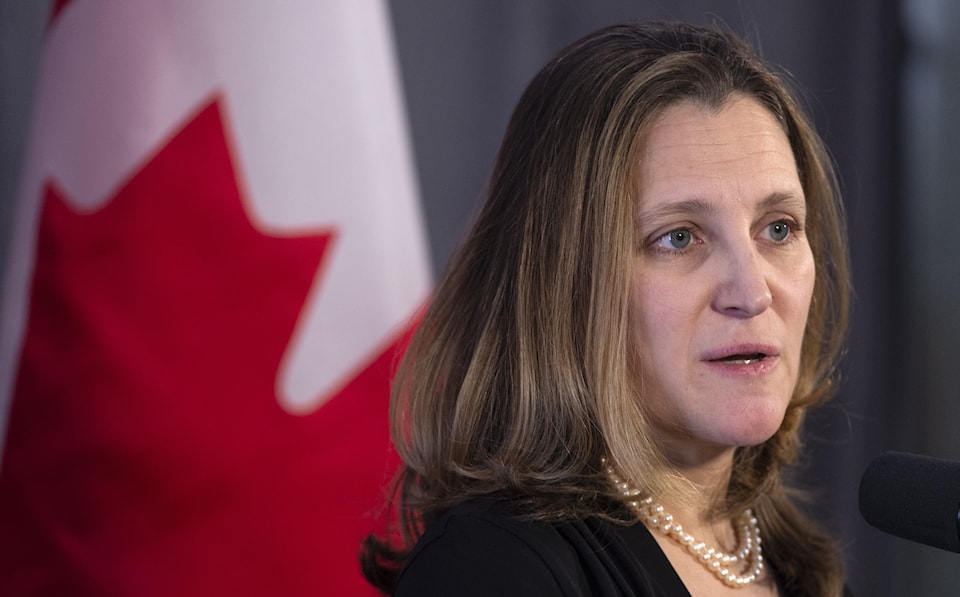Federal ministers continue to incentivize entrepreneurship in Canada, in the wake of the 2024 federal budget released in April.
Chrystia Freeland, deputy prime minister and finance minister, alongside François-Philippe Champagne, innovation minister, and Anita Anand, treasury board president, reiterated the upgraded economic plan in Ottawa on Tuesday morning.
“We are creating new incentives for Canadian entrepreneurs, targeted specifically at start-ups,” Freeland said. “We want to attract more investment into Canada and ultimately encourage Canadian entrepreneurs.”
The New Canadian Entrepreneurs’ Incentive, announced in April, is set to reduce the inclusion rate to 33.3 per cent on a lifetime maximum of $2 million in eligible capital gains when fully implemented. This, in turn, will give a tax break to entrepreneurs and a combined full and partial exemption of at least $3.25 million when selling all or part of a business.
In addition to that incentive, the federal government plans to bump the Lifetime Capital Gains Exemption (LCGE) to $1.25 million starting June 25.
“Through these measures, our government will create good paying companies,” Freeland said. “We will unlock the door to the middle class, renewing the promise of our great country.”
Freeland believes entrepreneurs with capital gains, as of June 25, will be in better tax positions and will have the opportunity to keep more of their funds for investing into new projects.
In the 2024 budget, Freeland and Rechie Valdex, minister of small business, highlighted the investment of $60 million in Futurepreneur Canada.
As a national, not-for-profit agency, Futurepreneur Canada would provide young Canadian entrepreneurs with access to business support to help them start their business.
Champagne says the recent measures in the 2024 Budget will help with growth and productivity in Canada.
“We need to make sure our small businesses can afford cutting edge technology to level up,” Champagne said. “With the new tax incentives, entrepreneurs will have the ability to immediately write-off data processing equipment.”
Champagne also hopes that the $600 million committed to Canada’s Scientific Research and Experimental Development (SR&ED) program over the next four years will encourage productivity and innovation for small and medium businesses.
“We have talked a lot about boosting productivity, and we can’t build an economy with just slogans,” Champagne said. “It is with a vision and a concrete plan that we will build a Canadian economy fit for the 21st century.”
Anand additionally discussed the importance of regulatory sandboxes, which is considered a controlled space designed to test products, within the Canadian economy.
“We are very focused on making sure businesses can work efficiently in the country and the introduction of regulatory sandboxes,” Anand said. “We need controlled environments for companies to test services and products and to ensure that businesses have the ability to try new ways of operating.”
Back in 2015, the Red Tape Reduction Act was released by the Treasury Board and was established to control the administrative burden that regulations impose on businesses.
Anand hopes the act continues to serve as a reminder to Canadians what the federal government is doing to ensure support for businesses across the country.
“We want to help businesses and support innovation while strengthening our economy,” Anand said. “We are going to ensure that we streamline processes and eradicate any obstacles for cross-border business.”
The combination of these initiatives is a part of the federal government’s Team Canada approach, according to the ministers.
“Canadian businesses are the back-bone of our economy, and our government is using every tool we have to continue to be there for Canadians,” Anand said.




